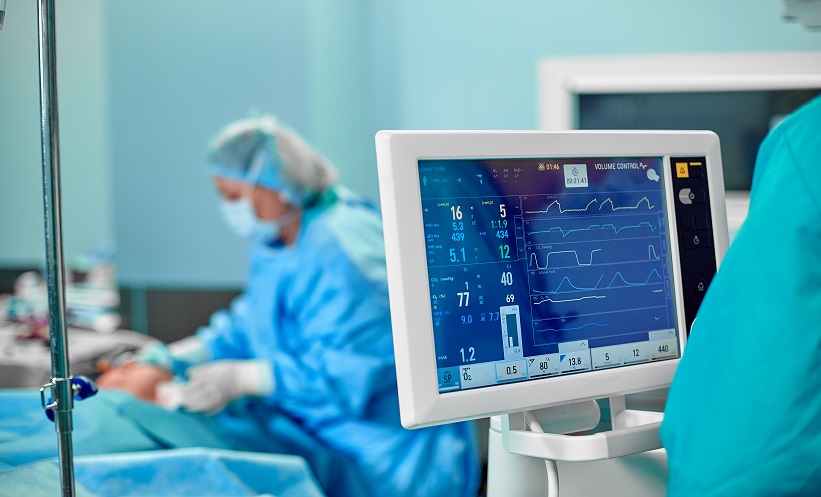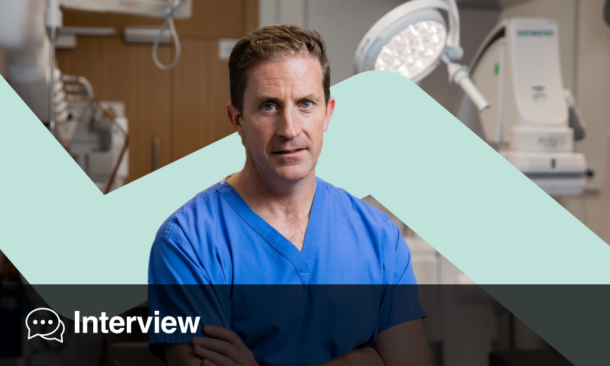Julien Dreyfus | Cardiologist, Centre Cardiologique du Nord, Saint-Denis, France
Citation: EMJ Int Cardiol. 2024;12[1]:35-38. https://doi.org/10.33590/emjintcardiol/YERQ9028.
![]()
What initially sparked your interest in cardiology, and what continues to motivate you in this field to this day?
I began my residency in cardiology at Bichat Hospital in Paris, France. At that time, it was one of the leading institutions for valvular heart disease, under the supervision of Alec Vahanian, who was also heading the European Guidelines for Valvular Heart Disease. The team included many brilliant colleagues, such as Bertrand Cormier, who developed a dedicated classification to predict procedural results after percutaneous mitral valve commissurotomy in patients with mitral stenosis, Bernard Lung, and David Messika-Zeitoun, who is now working in Ottawa, Canada, and has become my mentor. I was privileged to meet these people, discover this institution, and learn a lot from them. Working with passionate individuals, their enthusiasm becomes contagious, and it probably started for me at that time. I consider myself truly lucky.
Could you elaborate on the latest advancements in the diagnosis and treatment of tricuspid valve diseases, and how your research has contributed to these developments?
Fifteen years ago, there was significant interest in aortic valve disease due to the advent of transcatheter interventions for aortic valve stenosis and later for mitral valve regurgitation. However, the tricuspid valve received little attention. My mentor, David, asked if I wanted to work on this underexplored area, and I agreed. My first project as a resident was to compare measurements of the tricuspid annulus diameter using transthoracic and transoesophageal echography, and surgery to define the best method and appropriate cut-off values. This work followed Gilles Dreyfus’ findings on the prognostic impact of tricuspid annulus dilatation, which led to the recommendation for concomitant tricuspid valve annuloplasty at the time of mitral valve surgery for patients with a dilated tricuspid annulus, which was included in the 2007 European Guidelines on Valvular Heart Disease. I performed approximately 200 transthoracic and transoesophageal echocardiographies at a time when few were focused on the tricuspid valve, often referred to as the ‘forgotten valve’. Today, the situation has changed significantly. The tricuspid valve is no longer overlooked, thanks to increased awareness and advancements in treating tricuspid valve disease, primarily due to the development of transcatheter therapies.
In 2023, you partook in a roundtable discussion, with Lenard Conradi and Philipp Lurz, at PCR Valves 2023, regarding the latest developments in tricuspid regurgitation treatment. Could you summarise the main takeaways of this session for our readers?
I had the privilege of discussing tricuspid valve treatment with two brilliant colleagues, Philipp Lurz, an interventional cardiologist, and Lenard Conradi, a cardiac surgeon, both from Germany. Our discussion was particularly enriching as it brought together three key specialists: an interventional cardiologist, a cardiac surgeon, and a clinician focused on echocardiography. We agreed that early patient referral is crucial to improving outcomes and reducing in-hospital mortality, particularly after isolated tricuspid valve surgery. Additionally, we believe that the evolving transcatheter therapies for tricuspid valve repair and replacement will significantly change patient treatment. Our current goal is to identify patients who would benefit from curative treatment, whether surgical or transcatheter, and set objectives for optimal care. This task requires close collaboration between physicians and companies. We are just at the beginning of this journey, and the landscape will continue to evolve in the coming years.
During the discussion, you compared transcatheter tricuspid replacement and edge-to-edge repair. From your perspective, what are the main factors that influence the choice between these two treatment options, and how do you foresee these interventions evolving in the future to improve patient outcomes?
This is a very important question, which is why we need to define our goals and identify which patients would benefit from a curative intervention. Once we establish these criteria, we can determine for each patient whether repair or replacement is more appropriate. Interestingly, current registries show that approximately 60% of patients who undergo isolated tricuspid valve surgery receive a replacement, while 40% undergo a repair.
The choice between these options should be based on the valve’s anatomy and the right ventricle’s remodelling, aiming to achieve the lowest possible tricuspid regurgitation grade. If a repair cannot meet this goal, a replacement may be necessary. Additionally, the availability of devices varies by country, as most are only accessible through studies without reimbursement in many regions, often dictating our choices.
Replacement procedures are quick and reproducible, addressing conditions like huge gaps, multiple scallops, pacemaker leads, or concomitant stenosis. However, they carry higher risks, including vascular complications, need for transfusion, migration, and mortality. Repair, while often yielding poorer immediate results, rarely causes fatal complications, and may be preferrable when achieving optimal tricuspid regurgitation grades is possible.
In the future, long-term follow-up may reveal other issues such as thrombogenicity or durability for bioprostheses. Therefore, we must continue to define the best treatment strategies and work collaboratively to achieve these goals, as advancements in research and technology will continue to refine our approach and potentially offer more effective solutions.
From your experience, in what ways has EuroPCR added to the field of interventional cardiology?
I think EuroPCR Congress is an amazing event, primarily created for interventional cardiologists; yet, it attracts a wide range of specialists, including clinicians and imaging specialists like myself, surgeons, and heart failure specialists. One of its main strengths is its ability to gather physicians from all over the world, fostering a multidisciplinary environment. Over 10,000 participants attend, including physicians, companies, and the press.
EuroPCR is highly educational, encouraging interactive discussions rather than passive listening. Initially focused on coronary artery disease, it has expanded to include valvular heart diseases, reflected in events like PCR London Valves, which is specifically dedicated to valvular heart disease. The creation of the PCR Tricuspid Focus Group, which I am part of, highlights PCR’s commitment to advancing tricuspid valve disease management. This group, consisting of dedicated colleagues and companies, aims to improve patient care through collaborative efforts, regular meetings, and publications. This multidisciplinary, multicentric approach exemplifies how PCR fosters collaboration and innovation in interventional cardiology.
Please summarise the TRI-SCOREs trial for our readers. What motivated you to develop this trial, initially?
I began at Bichat Hospital with my mentor, David. Initially, we focused on the tricuspid annulus, but then we shifted to investigating in-hospital mortality after isolated tricuspid valve surgery. Existing publications indicated a high mortality rate, around 8–10%, but lacked detailed explanations.
Frustrated by this lack of information, we collaborated with 12 tertiary French hospitals to collect baseline characteristics for patients undergoing isolated tricuspid valve surgery over 11 years. Despite being a high-risk surgery, we gathered data from 466 patients. Our analysis revealed that clinical presentation at the time of surgery, rather than the mechanism of tricuspid regurgitation, was the key predictor of in-hospital mortality. Factors such as age, right-sided heart failure signs, diuretic dosage, and kidney or liver dysfunction were critical.
To address the need for a dedicated risk assessment tool, we developed the TRI-SCORE, the first score specifically designed to predict in-hospital mortality for isolated tricuspid valve surgery. This score includes eight easily ascertainable parameters: age ≥70 years, NYHA Class III–IV, right-sided heart failure signs, diuretic dosage, kidney and liver dysfunction, and right and left ventricular dysfunction. The score ranges from 0–12 points, correlating with in-hospital mortality rates from 1–65%.
The TRI-SCORE has been validated in various countries, including Asia, proving effective in predicting outcomes. This tool guides individual clinical decisions and emphasises early intervention to improve patient survival. Our ongoing work, particularly with the TRIGISTRY registry, aims to refine treatment strategies and improve patient management across more than 30 centres in 10 countries.
Last year, we demonstrated that the TRI-SCORE could predict 2-year survival. Patients with a low TRI-SCORE (≤3) who were referred for surgery had better outcomes, with improved survival compared to those receiving medical therapy. However, there was no benefit for patients with intermediate and higher TRI-SCORE (≥4), suggesting that early correction of the disease improves survival. We have also shown that transcatheter interventions improved 2-year survival compared to medical therapy in low- and intermediate-risk patients (TRI-SCORE ≤5) when procedural success is achieved, defined as mild-to-moderate or lower tricuspid regurgitation grade at discharge, but not in high-risk patients (TRI-SCORE ≥6).
Our research underscores the importance of early intervention based on TRI-SCORE to improve survival, highlighting the need to treat the right patient at the right time. To facilitate its use in daily practice, a free online TRI-SCORE calculator is available (www.tri-score.com), and an app will be launched soon.
Are there any innovations on the horizon within interventional cardiology, that are of particular interest to you? What advice do you have for any aspiring cardiologists?
Innovations? There are indeed many, driven by the large number of patients and substantial financial investments. Fifteen years ago, companies overlooked the tricuspid valve, but now, witnessing the advancements with aortic stenosis, they realise its potential. I believe that within 15 years, the tricuspid valve will see similar breakthroughs. Companies understand this, and we are now collaborating closely, accelerating progress. New devices frequently emerge, although not all succeed. This is an exciting time with a lot of work and enthusiasm from everyone involved. While some innovations are remarkable and others less so, there is a genuine awareness of the disease. Many people, including cardiologists, surgeons, and companies, are working together. For example, the PCR Tricuspid Focus Group has significantly impacted the field, and I am thrilled to be part of it.
For aspiring cardiologists, remember that medicine, especially cardiology, is fundamentally about the patient. If you choose this path, your focus should always be on patient care. You will spend a lot of time with patients and face frustrations, especially when treatments are not straightforward. Innovation often comes from these challenges. Even if you have great ideas, you cannot achieve everything alone. Collaboration with colleagues and companies to develop new devices and treatments is essential. It is a demanding field, and you must be prepared to work hard. Dedication and patience are key. If you are passionate and willing to put in the effort, you can make a significant impact and become a great doctor.







